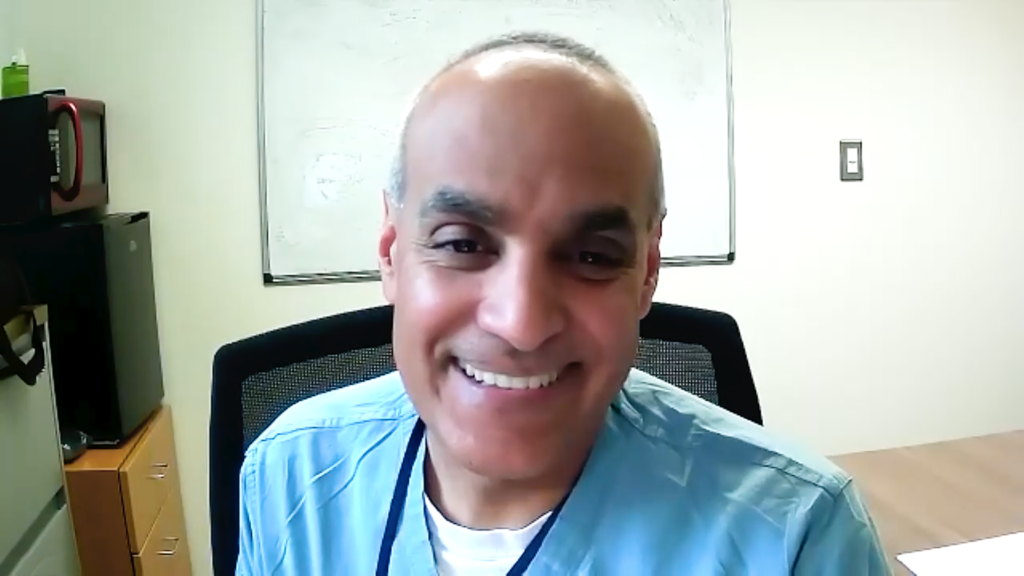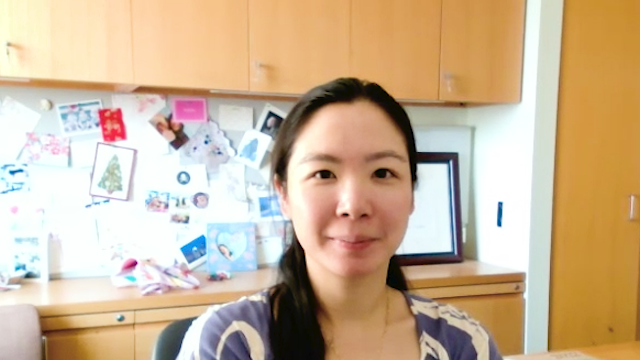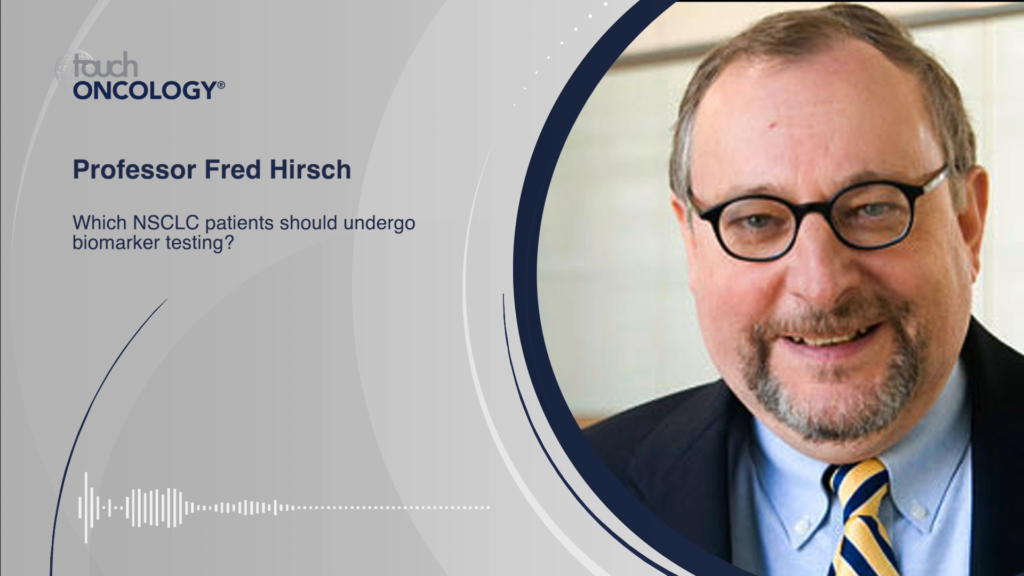The anticipated phase 2 data from the DeLLphi-301 study (NCT05060016), investigating the antitumor activity and safety of taralatamab administered at two doses in pre-treated small cell lung cancer (SCLC), were presented at this year’s EMSO meeting.
To understand more about this investigational treatment and the results from the study we spoke with study investigator, Dr Luis Paz-Ares (University Hospital October 12, Madrid).
Dr Paz-Ares also gave us his insight into the impact of these findings for patients with SCLC and discusses with us the questions that still need to be addressed to realise the potential of tarlatamab.
Questions
- What are the limitations of current therapeutic options for small cell lung cancer (SCLC)? (0:12)
- Can you tell us about tarlatamab and its mechanism of action? (0:51)
- What were the aims, design and eligibility criteria of the DeLLphi-301 study? (1:55)
- Could you summarise the findings from the primary analysis? (2:55)
- What will be the next steps towards realising the potential of tarlatamab in treating SCLC? (5:45)
Associated abstract:
LBA92 – Tarlatamab for patients (pts) with previously treated small cell lung cancer (SCLC): Primary analysis of the phase 2 DeLLphi-301 study
Disclosures: Luis Paz-Ares has acted as a consultant/advisory board member/speaker’s bureau participant and received honorarium from: Lilly, MSD, Roche, Pharmamar, Merck KGaA, AstraZeneca, Novartis, Amgen, Pfizer, Sanofi, Bayer, BMS, Mirati, GSK, Janssen, Takeda, Regeneron and Sanofi. Dr Paz-Ares has also received grant/research support from: MSD, AstraZeneca, BMS, Pfizer and PharmaMar.
Support: Interview and filming supported by Touch Medical Media Ltd. Interview conducted by Gina Furnival
Filmed in coverage of the ESMO 2023
Click here for more content on lung cancer & for further ESMO 2023 highlights visit here.
Transcript
I’m Luis Paz-Ares, I’m a Medical Oncologist working at the University Hospital October 12 in Madrid.
Q1. What are the limitations of current therapeutic options for small cell lung cancer (SCLC)? (0:12)
You know, small-cell lung cancer (SCLC) is a pretty aggressive form of lung cancer with a quite poor prognosis. The truth is that those patients with small cell lung cancer tend to respond pretty well to therapy, particularly chemotherapy, but responses are most of the time short-lived. Therefore, subsequent therapies are not very effective. Indeed, we have not a single treatment approved for patients on third-line and beyond.
Q2. Can you tell us about tarlatamab and its mechanism of action? (0:51)
So tarlatamab is a BiTE, a bi-specific T-cell engager. So, this is a monoclonal antibody that at one end binds to the tumour cell through the DLL3 protein on the surface of the SCLC cell, and on the other end binds to the CD3 receptor on the T-cell. In turn, the T-cell becomes activated and is able to lysate the SCLC cell. This new form of immunotherapy is pretty attractive because it allows T-cell activation independent of antigen presentation, and antigen presentation is an issue in SCLC because very often those tumours have downregulation of class 1 MHC, which is essential for antigen presentation.
Q3. What were the aims, design and eligibility criteria of the DeLLphi-301 study? (1:55)
That [DeLLphi-301] trial was designed hoping to compare two doses of the drug, 10 milligrams, and 100 milligrams. That was done in part one of the study, then in part two, the dose chosen for further development was again, included an additional cohort of twelve patients because in the initial part one, 88 patients were treated on each of the doses. And then in part three where 34 patients were additionally included, with reduced monitoring. So, patients instead of requiring 48 hours monitoring, some inpatients were actually monitored for 24 hours.
Q4. Could you summarise the findings from the primary analysis? (2:55)
We have seen in part one, that responses were observed in some 40 percent of the patients treated at 10 milligrams as compared to a 32 percent response rate in those treated with 100 milligrams. PFS was, mPFS, 3.9 months in patients treated with 100 milligrams as compared to 4.9 months for the lower dose of 10 milligrams. At 6months, 40 percent of those treated with 10 milligram were still progression-free as compared to 34, among the group of patients treated with a 100 milligrams. Then, in terms of survival, the trial is quite immature as yet. But, at 6 months, some 73 percent, or 71 percent at 10 milligrams and a 100 milligram doses were still alive.
In terms of safety, I have to say the more frequent side effects were CRS, typically grade 1 or 2, loss of appetite, fever and constipation. Importantly, I have to say that at the high-dose patients more required dose-interruption or dose-reduction, but discontinuation was solely seen in 3 percent of the cases due to adverse events. Two others were of special interest: CRS, cytokine release syndrome, and ICANS, the neurological symptoms. Those tended to cluster in the cycle one and cycle two, particularly cycle one, and were more frequent at the 100 milligram dose as compared to the 10 milligram dose. Cytokine release syndrome was seen in 51 percent of the patients treated at 10 milligrams as compared to 61 percent among those treated at a 100 milligrams, and was grade 3 in only one patient at the lower dose as compared to 6 percent of the patients at the higher dose. ICANS were seen in 28 percent of the patient at a 100 milligram dose as compared to 8 percent in the 10 milligram dose. And in the later group, in the 10 milligram dose, not a single patient had a grade 3, ICANS as compared to 5 percent in the 100 milligrams group. So taking those data together the 10 milligram dose of tarlatamab was selected in terms of the better benefit-risk ratio.And this is the dose that has been chosen for further development.
Q5. What will be the next steps towards realising the potential of tarlatamab in treating SCLC? (5:45)
The more important question to be solved immediately is, how would tarlatamab compare to the standard of care in pre-treated patients? And that question is being addressed in the DeLLphi-304 study, where tarlatamab at 10 milligram is compared to the standard of care chemotherapy in this area. Then some other things that are required to be defined such as, can we include tarlatamab or is it worthy to be included within the first-line chemotherapy regimens, and I think we are doing some studies including tarlatamab in the maintenance setting, even in the induction treatment for first-line.
And, of course, we are continuing to study some more reduced monitoring, including patients only being monitored as out-patients without, you know, without, hospitalization.














